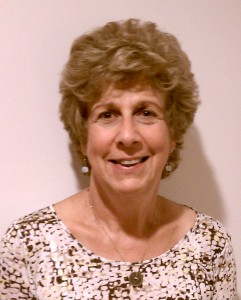Community Health Care Association of New York State
Collaborating Through Data is Key for Lisa Perry and New York Health Centers
For Lisa Perry, collaboration continues to be a driving factor in the effort to improve health care quality at community health centers throughout New York state – and those collaborations run deep.
centers throughout New York state – and those collaborations run deep.
As Vice President for health IT at the Community Health Care Association of New York State (CHCANYS), Perry stands at the forefront of a multi-year U.S. Centers for Disease Control and Prevention grant that is merging the efforts of federal and state agencies, a statewide quality organization and the community health centers CHCANYS represents to create the NYS Cancer Prevention Registry of the CHCANYS Center for Primary Care Informatics. The registry promotes cancer screening among medically underserved populations and ensures follow-up care.
And while that’s a lot of parties involved, it’s just a part of the collaboration. The nerve center for the project is the Center for Primary Care Informatics (CPCI) – the data warehouse and reporting platform powered by Azara DRVS. CHCANYS launched DRVS (pronounced DRIVES) as part of the CPCI in 2011 and is in the midst of connecting the 60+ CHCs it represents statewide. The cancer registry is housed within the CPCI.
As Perry and the CHCANYS team see it, the CPCI is helping the organization ensure its mission to ensure that all New Yorkers have continuous access to high quality community-based health care services including a primary care home. The cancer registry is a key application.
“It’s a really great example of the challenges and rewards of collaboration,” said Perry during a recent interview with the Azara Community.
It has been a busy year for Perry and CHCANYS. While it has been building out the CPCI, is also commenced work on the five-year CDC grant to establish and build out the cancer registry. The grant – the largest CHCANYS has ever received – is part of a collaboration with the New York State Department of Health and the Island Peer Review Organization (IPRO), New York’s Quality Improvement Organization. It is designed to focus on adult populations with the lowest screening rates for breast, cervical and colorectal cancers.
And at the same time that CHCANYS is focusing on implementing the grant, it is also conducting a rigorous data validation study designed by IPRO. Azara has drawn the random samples that CHCANYS uses for the chart review.
The validation study reviews patient records in the EHR and determines which cancer screenings were performed but not captured by the data warehouse. The baseline study determines how well the data in the data warehouse reflects what takes place in the patient encounter.
“The results will be very useful because we will be able to monitor how much of the improvement in the metrics is attributable to actual improvement in care processes vs. improvement in data collection,” said Perry. “It will also inform the work we are going to do in year two in our collaborative technical assistance meetings with the health centers. We will be identifying patterns of patient care and data collection that can be improved upon, and will target our technical assistance to support health center quality improvement work in these areas.”
Perry offered the example of a patient being referred to another facility for a mammogram. The test may actually be performed – and the results negative – but unless the referral is followed up and entered into the EHR is a structured way, it will not be picked up in the CPCI.
“The detailed chart review is going to really inform the work we do in subsequent years of the grant, and I think will be interesting to other DRVS users because these are the types of issues we all confront in improving quality of care and quality of data,” said Perry.
Data benchmarking forges collaboration between CHCs
The CPCI is also allowing community health centers to collaborate with each other in much more comprehensive manner than ever before. Twelve health centers – representing about 70 total sites across New York State – volunteered to participate in the first cohort of the Cancer Registry project. The information shared among health centers is limited to the aggregated totals for each health center. For example, the Community Healthcare Network can get an overall snapshot of how well Buffalo Community Health Center is doing on hypertension control, and vice-versa. A health center’s data at the site, provider or patient level is not shared with the other centers; but an individual health center with multiple sites can see how its sites and providers compare to each other in terms of quality metrics and other key pieces of data,
Perry reports there is anecdotal evidence of health centers reaching out to colleagues at other centers to find out how they have achieved good results on a particular quality measure.
“The health centers are motivated toward quality improvement,” she said. “That has been the culture of the health center world for years.
At the same time, Perry said community health centers are excited about the Visit Planning tool, which is part of the DRVS platform. The planning tool lists for the clinician all the patients that are scheduled that day and all the preventive care they are due for. The care support team at the center can review the tool, research missing chart documentation and prepare for each patient visit, maximizing care coordination, quality and time management. and manage any alerts.
“The staff can do all of this work before the patient visit, saving the clinician a lot of time and administrative work so the clinician can focus on the patient,” said Perry.
Again, the collaborations run deep.
